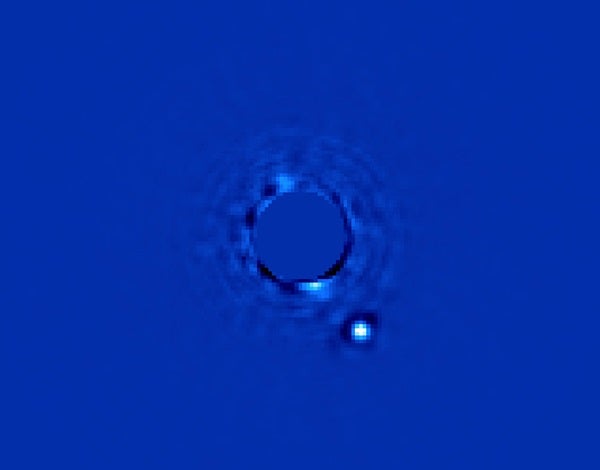The ultimate goal in the study of exoplanets is to find life’s biosignatures on another world. I describe this search in April’s “The next search for Earth-like worlds.” To do so, scientists will need to directly observe an Earth-like planet that is orbiting at the right distance to support surface water and determine many of the gasses in its atmosphere. So far, astronomers have taken photographs of 47 planets — seven of them shown below. But these are young worlds that lie far from their young stars — not places that yet could support life. Researchers expect the technology to advance enough in the next few decades to directly observe such life-hosting worlds.
Scientists imaging exoplanets
Astronomers have directly observed a few dozen worlds orbiting other suns.










